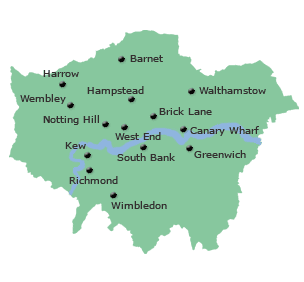
London boroughs are urging the government to reconsider proposed changes to how children’s services funding is allocated, warning that the current plans fail to reflect the true level of need
in the capital and could have a “devastating impact” on council budgets.
A joint analysis by the National Children’s Bureau and Public Alchemy, commissioned by London Councils, has identified “serious flaws” in the government’s proposed Children and Young People’s Services (CYPS) relative needs formula. The report questions the formula’s reliability and accuracy, raising concerns that it overlooks key factors such as housing poverty when assessing deprivation.
The CYPS formula is a key part of the government’s wider Fair Funding Review 2.0, which aims to overhaul how local government funding is distributed from 2026-27 onwards. The Department for Levelling Up, Housing and Communities is currently consulting on the changes, which London Councils describes as “make or break” for borough finances.
Key findings from the research highlight several weaknesses in the draft CYPS formula:
- Unproven Methodology: The proposed formula uses an untested approach with metrics that have weak or unclear links to actual need. Major methodological changes could significantly alter how resources are distributed among councils, without sufficient justification.
- Flawed Deprivation Metrics: The formula relies on the Income Deprivation Affecting Children Index (IDACI), which does not consider housing costs when measuring deprivation. This omission risks underestimating deprivation levels, particularly in London, where high housing costs are a key driver of child poverty.
- Free School Meals (FSM) Data Issues: The use of FSM eligibility as a proxy for deprivation is also problematic, as it fails to reflect the true number of children in need. FSM data undercounts many children affected by housing-driven poverty. Researchers suggest using the number of children in households receiving Universal Credit as a more accurate alternative.
- Inadequate Health Metrics: The draft formula proposes a subjective measure of child health, rather than objective indicators such as Special Educational Needs and Disability (SEND) statistics, which provide a more comprehensive view of children’s needs.
- Overcrowding Overlooked: The formula inexplicably replaces ‘overcrowded housing’ with ‘under-occupied housing’ as a metric, despite the well-established link between overcrowded living conditions and children’s social care needs.
- Irrelevant Parental Education Data: The inclusion of parents’ education levels as a metric is seen as misplaced, as it fails to reflect the child’s immediate socioeconomic environment. Crime rates, which have a stronger correlation with children’s social care needs, would be a more appropriate measure.
London Councils' own modelling shows that these proposed changes to the CYPS formula would cause the largest shifts in funding allocations of any formula under review. The analysis suggests that up to £1.5 billion could be redistributed away from London, with all but one borough facing a funding cut.
This reduction comes despite London boroughs collectively overspending on children’s services by over £150 million in each of the last two years. Furthermore, the 2021 Census revealed that London experienced a greater increase in its child population than any other region in England since 2011. Despite this, the new formula assumes London’s need for children’s services has fallen by nearly 40%.
The CYPS formula accounts for approximately 25% of the broader relative needs formula currently under consultation, which will determine the allocation of more than £30 billion in general funding to councils from 2026-27 onwards.
Borough leaders have criticised the process as lacking transparency, stating that the formula has been developed “behind closed doors” with minimal input from councils or children’s services experts.
London Councils estimates that the overall funding reforms, including changes across all formulae, could result in London boroughs receiving £700 million less than under current funding arrangements. While some proposed changes—such as better recognition of the costs of temporary accommodation—are welcomed, boroughs warn that the negative impacts of the children’s services formula could be financially catastrophic.
Cllr Claire Holland, Chair of London Councils, said:
“We welcome the government’s intention to reform council funding since this is long overdue, and it is critical that funding is distributed fairly and efficiently on the basis of need.
"However, it’s clear there are serious issues with the proposed children’s services formula, which risks dramatically underestimating levels of need in London and other parts of the country. This would have a devastating impact on our ability to deliver vital local services, particularly for our most vulnerable children and young people.
“A more accurate approach to assessing local levels of need is in everyone’s interests. It will help create a funding system that is robust, provides councils with the resources they need and – following 14 years of structural underfunding – restores long-term financial stability to boroughs and the wider local government sector.
“The consultation is an essential opportunity to reexamine the formula, and we are keen to work with the government to develop a model that is accurate and robust.”
James Shutkever, Social Care Programme Lead at the National Children’s Bureau, said:
“At a time of increased pressure on children’s services departments across the country the relative needs formula is a crucial tool for fair distribution of funding to ensure that children, young people and their families get the support that they need and deserve.
“However, our research raises significant concerns about the robustness of the government’s proposed methodology for the funding formula. We urge the government to consider the recommendations set out in the report and refine its proposals. This will help to ensure that the formula lives up to its name and is based on need.” Photo by Lucélia Ribeiro, Wikimedia commons.



































